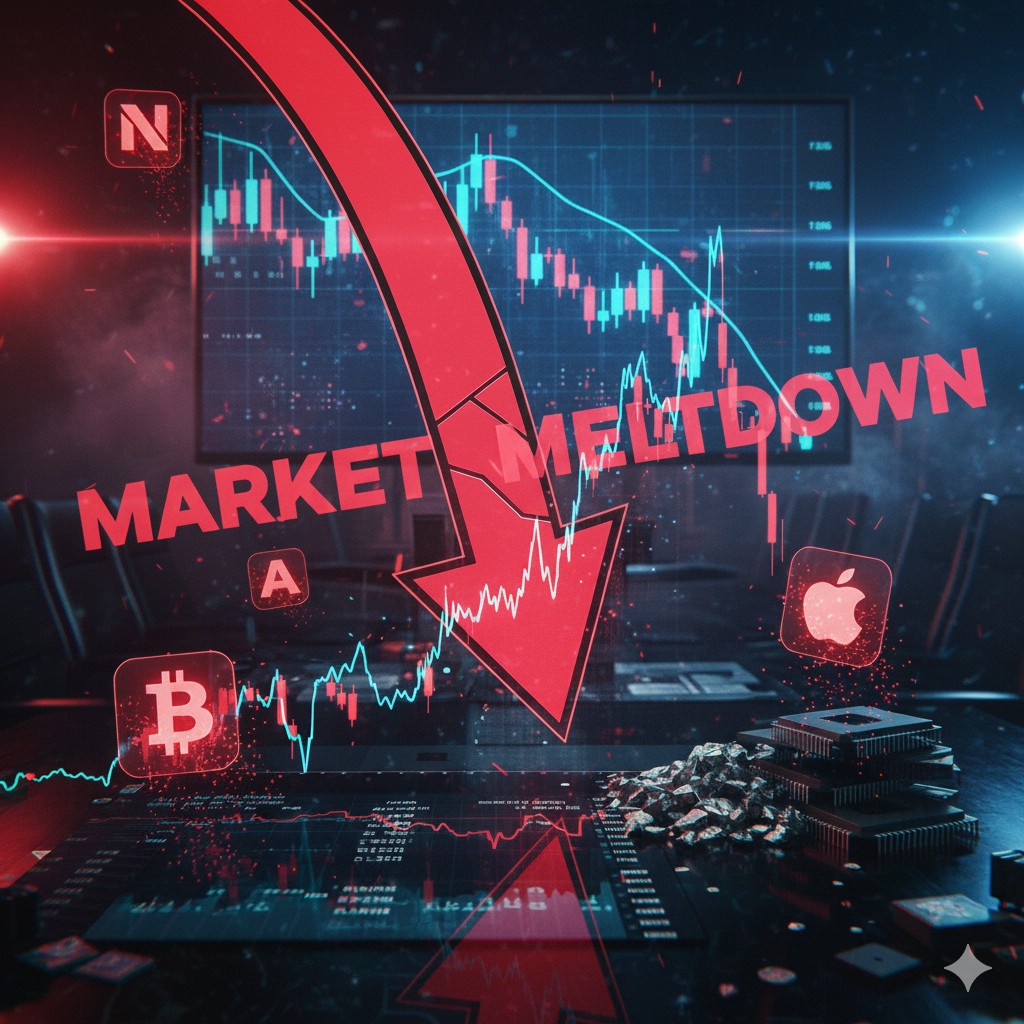
UPDATE: Overnight, a shocking tariff threat from President Donald Trump sent the US stock market into a tailspin, erasing over $600 billion in value and dragging the cryptocurrency market down with it. This sudden plunge marks a dramatic shift for investors, sending tech stocks and digital currencies reeling.
The Nasdaq Composite, heavily weighted with tech giants, suffered the worst, plummeting 3.6%. The broader S&P 500 index dropped 1.9%, while the Dow Jones Industrial Average fell 604 points or 1.3%. This was a brutal reversal for a market that had only hours earlier shown promise, highlighting the volatility of investor sentiment.
The sell-off was particularly pronounced in the technology sector, which had been riding high on optimism surrounding artificial intelligence. Stocks like NVIDIA hit an all-time high before crashing down 4.9%, while Advanced Micro Devices (AMD) fell a staggering 7.8%. Other major players, including Tesla and Apple, also faced significant losses due to their exposure to the Chinese market.
In the wake of Wall Street’s turmoil, the cryptocurrency market faced a heavy sell-off, with billions wiped from its total capitalization. Bitcoin and Ethereum mirrored the declines in high-risk tech assets, raising fears about their status as a hedge against market volatility.
The chaos was triggered by an unexpected announcement from President Trump, who threatened a “massive increase” in tariffs on Chinese imports. His declaration, shared via the official White House account, accused China of “becoming very hostile” and controlling vital resources, reigniting fears of a full-blown trade war between the US and China.
“America will impose a Tariff of 100% on China,” Trump stated, prompting immediate concerns among investors. The potential new tariffs would not only raise costs for US companies but could also lead to higher consumer prices, sparking fears of a recession.
China’s recent actions, including tightening export controls on rare earth minerals critical for technology, further escalated tensions. These developments, alongside an antitrust probe into Qualcomm, have intensified the trade conflict, which was already fragile following the cancellation of a planned meeting between Trump and Chinese President Xi Jinping.
Art Hogan, Chief Market Strategist at B. Riley Wealth, commented on the situation, stating,
“It’s not surprising to see technology-related stocks down the most today as they have significant exposure to China.”
The backdrop of the stock market collapse includes rising bond yields, which have made government bonds more attractive compared to high-risk stocks. The 10-year Treasury yield recently spiked to levels not seen in over a year, adding to investor anxiety. Additionally, the ongoing US government shutdown, now in its tenth day, has delayed critical economic reports, leaving traders in the dark.
As the situation unfolds, Australia’s ASX 200 is expected to feel the impact when it opens for trading next week. With close ties to global markets, Australian investors should brace for potential downturns, particularly in tech stocks and mining companies reliant on China.
The ripple effects of these tariffs could ultimately hit consumers hard. If implemented, the cost of tech products, from smartphones to electric vehicle components, could rise significantly, straining already tight budgets for everyday Australians.
Looking ahead, investors are left in a state of uncertainty, watching closely to see if Trump’s tariff threats signal a prolonged economic conflict or if negotiations will resume. The volatility is likely to continue, with market reactions closely tied to developments in US-China relations.
As the situation remains fluid, the stakes are high, and investors are reminded that in today’s interconnected economy, the impacts of political decisions can swiftly overshadow even the most promising market trends. Keep an eye on the news for updates, as the potential for further wild swings looms large.






